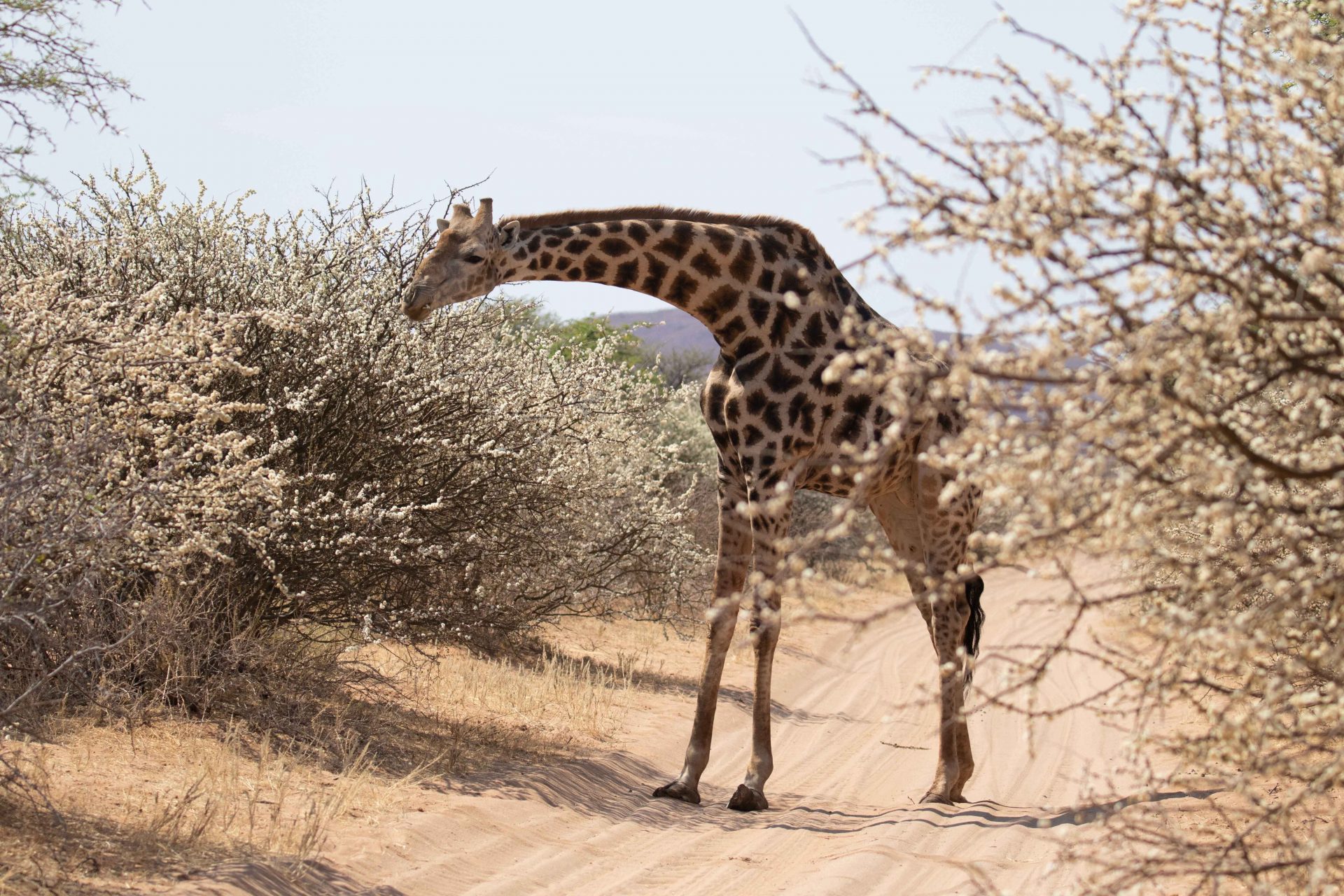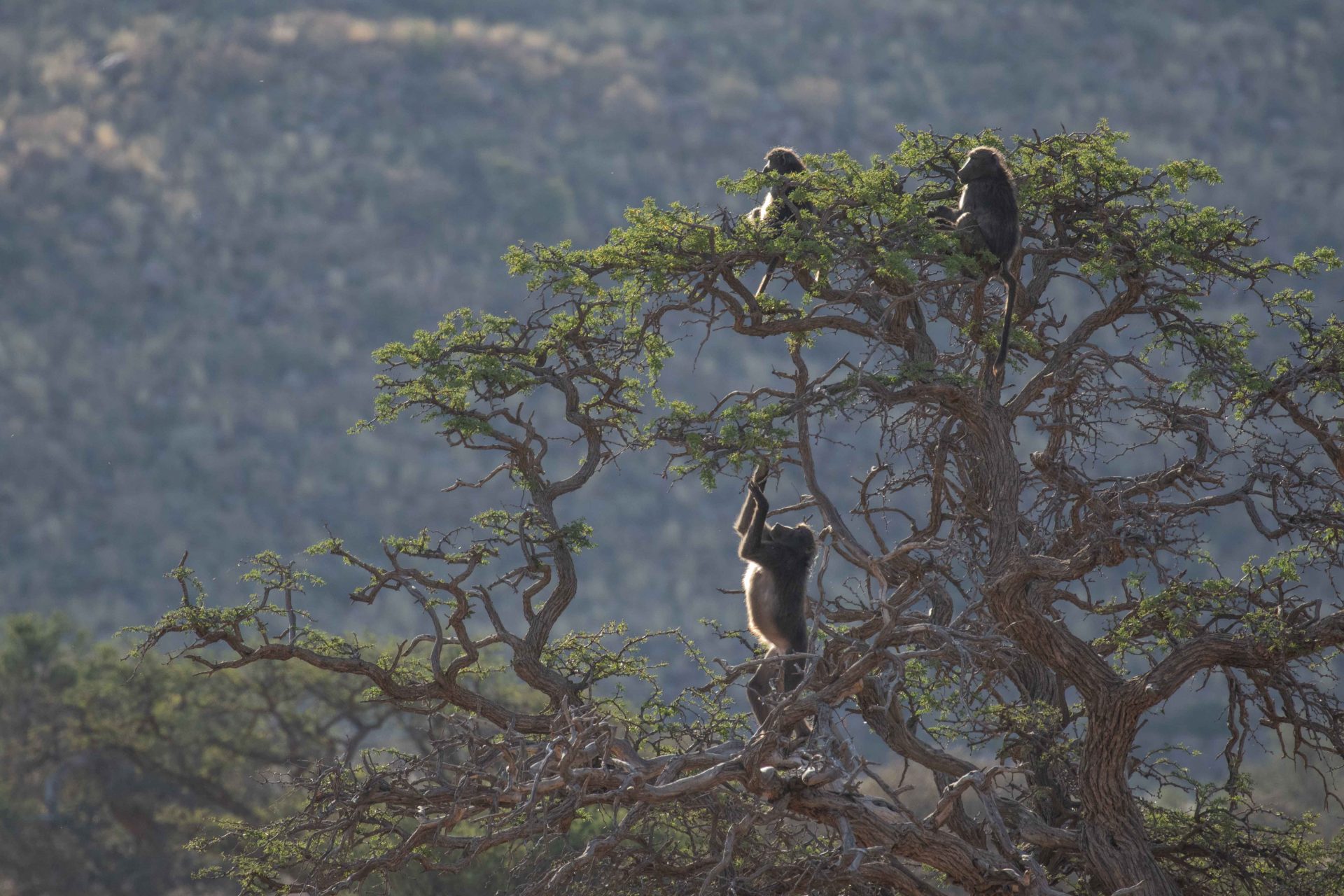A year of spring profusion
The Kalahari’s spring flowers erupt later in the season compared to other parts of South Africa known for spring displays. This is an incredibly resilient environment where dormant seeds hold on to the good rains and only the toughest organisms survive the heat. This year’s spring display on the reserve was exceptional. In September, as the days began to lengthen and temperatures doing the middle of the day began to rise, spring came to the Kalahari in the form of flowering January bush, blackthorn and camel thorn. For those of us who had spent many seasons on the reserve, we all agreed that it was one of the most abundant years we’d ever witnessed.

Through the cold, dry winter months, the shrub-like January bush (Gnidia polycephala), relies on energy supplies stored in its roots protected deep within the earth. In early September, they were the first to flower – brilliant, dark mustard-yellow flowers. You may wonder whether the person who named this plant was confused, but the January bush flowers alone to ensure a greater chance of pollination. With no other shrubs flowering at the same time, it does not have to compete for the attention of pollinators like bees.

The blackthorn (Senigalia mellifera) is a very prominent and abundant low-growing tree in the Kalahari. It is found in the shallower soils of the dune streets and in the valleys of the Korannaberg mountains. The blackthorn also stores nutrients and moisture in its roots for this time of the year. Swathes of the reserve were transformed by brilliant, white, garden-like displays of the blackthorn’s pom-pom flowers. Flies and other insects were initially attracted to the flowers and soon kudu, giraffe, springbok and even gemsbok were seen feeding on the camel thorn. The behaviour of gemsbok was particularly interesting, and I spent a lot of time observing and photographing them. One of them would scratch its head on a branch, shaking the blossoms so that they fell to the ground. The animal would then pick up the flowers from the ground and delight in feeding on them.

The camel thorn (Verchelia erioloba) was the last of the three species to flower, with similar mustard-yellow blossoms to the January bush, but the same Acacia-like flowers as the blackthorn. Giraffe browsed mainly on the camel thorn flowers, but I also saw baboons balanced precariously in the high branches searching out the flowers.

By late October, pods had replaced the blossoms on all these trees. The promising early summer rains have already brought about a multitude of wild flowers forming carpets of yellow. If you’re at Tswalu now, you will see morning glory, cucumbers, creepers, bulbs and other floral evidence of the recent rains. While spring 2020’s floral displays were amazing, I hope that the next few years bring consistently higher rainfalls so that life returns in abundance to the Kalahari.